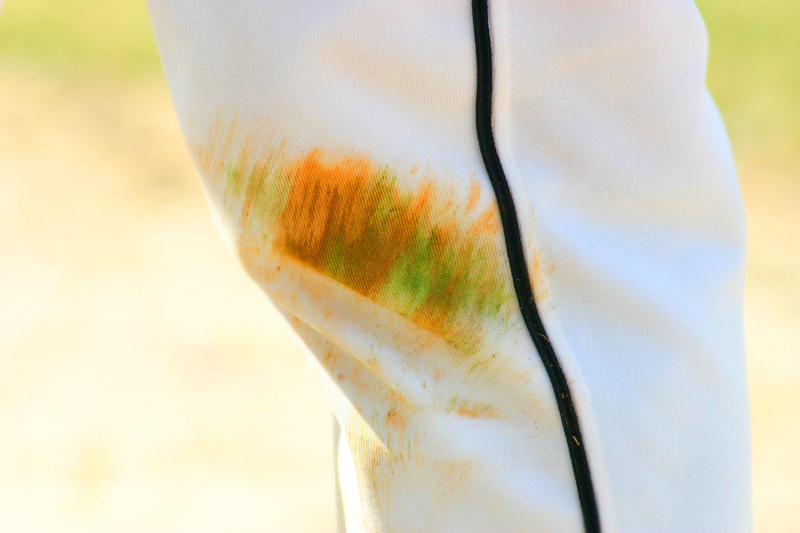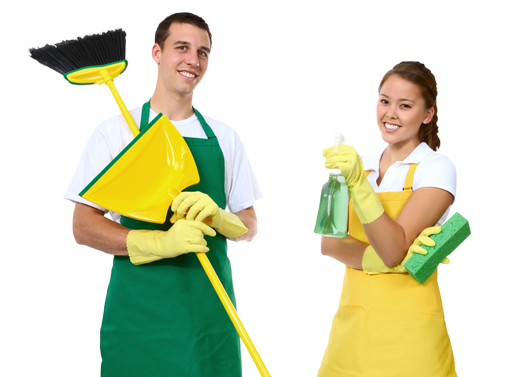How to Keep Your uPVC Window Frames Spotless and Fresh
Posted on 30/06/2025
How to Keep Your uPVC Window Frames Spotless and Fresh
Are your uPVC window frames starting to look tired, dull, or dirty? Maintaining the pristine appearance of your windows is not only essential for kerb appeal but also increases your property's value and enhances indoor air quality. In this comprehensive guide, you'll discover step-by-step methods and valuable tips to ensure your uPVC frames remain dazzling and fresh for years to come.
Why Clean uPVC Window Frames Regularly?
uPVC, short for unplasticized polyvinyl chloride, is a highly popular material choice for window frames due to its durability, low cost, and minimal maintenance needs. However, this does not mean that you can ignore cleaning altogether. Dirt, grime, and air pollutants can accumulate over time, making even new installations look aged.
- Prolongs lifespan: Regular cleaning helps prevent degradation.
- Prevents staining and discoloration: Dust and pollutants can cause persistent marks.
- Ensures smooth functionality: Clean frames reduce the risk of jams or sticking windows.
- Improves appearance: Sparkling frames complement your home's aesthetics.
- Enhances hygiene: Reduces mold and allergen build-up indoors.
With the right approach, you can keep your uPVC frames spotless and enjoy crystal-clear views year-round.

Common Causes of uPVC Frame Discoloration and Dirt Build-up
Understanding what causes uPVC window frame discoloration is the first step towards preventing it. Typical causes include:
- Atmospheric pollution - including car exhaust and industrial emissions
- Weather effects - such as rain, wind, and UV rays leading to fading or chalking
- Bird droppings and tree sap
- Moss, algae, and mildew growth in damp environments
- Residue from harsh chemicals or improper cleaning agents
*Tip*: Prompt removal of dirt and contaminants prevents them from becoming ingrained.
Best Cleaning Routine for uPVC Window Frames
If you're serious about keeping your uPVC window frames clean and in top condition, follow this effective routine at least once every two to three months--or more often in polluted or coastal areas.
Before You Begin: Tools and Supplies Checklist
- Mild liquid soap or dedicated uPVC cleaner
- Soft cloths or sponges (microfiber preferable)
- Bucket of warm water
- Soft-bristled non-abrasive brush
- Vacuum cleaner with brush attachment (optional)
- Old toothbrush for tight corners
- Clean, dry towel or lint-free cloth
- Spray bottle (for convenience)
Important: Never use abrasive pads, harsh solvents, or bleach--these can scratch or discolor the uPVC surface.
Step-by-Step Cleaning Instructions
-
Remove Surface Dust and Debris
Start by using a dry cloth, soft brush, or vacuum to eliminate loose dirt and cobwebs from the frame's corners, edges, and sills. -
Create a Mild Cleaning Solution
Mix a few drops of washing-up liquid or a purpose-made uPVC cleaner in a bucket of warm water. Avoid overly hot water, which can warp plastic. -
Wipe Down the Frames
Dampen your microfiber cloth in the solution and wipe the entire frame surface. For corners and tight spots, use a soft toothbrush. -
Rinse and Remove Soapy Residue
Use another cloth dampened with clean water to rinse away soap, especially along the seals and edges. -
Dry Thoroughly
Buff your uPVC window frames with a soft, dry towel to restore their sheen and prevent water spots.
How to Tackle Stubborn uPVC Stains
Some stains on uPVC frames may require extra attention. Try these methods:
- Pencil Eraser Trick: Gently rub stubborn marks (like scuff marks or mold spots) with a clean white eraser.
- Specialized uPVC Cream Cleaner: These products are designed to lift tough grime or marks without damaging the plastic. Apply with a soft cloth, following the manufacturer's instructions.
- Isopropyl Alcohol: For greasy residues, mix a small amount with water and gently rub the area.
- Baking Soda Paste: For persistent dirt, make a mild paste with baking soda and water. Apply with a soft cloth, working in circles, then rinse off.
*Remember*: Always spot test any new cleaning technique on a hidden area of the frame.
Cleaning uPVC Window Seals and Hinges
Don't neglect the seals and moving parts! Dirty seals or hinges can compromise window operation and energy efficiency.
- Seals/Gaskets: Wipe gently with a damp cloth and mild soapy water. If you spot mold, use a white vinegar solution (equal parts vinegar and water).
- Hinges & Locks: Clean with a brush and wipe down, then lubricate moving metal parts using a silicone spray once frames are dry.
Note: Never use oil-based lubricants on plastic components, as these can degrade the material over time.
Homemade vs Commercial uPVC Cleaners
Wondering whether shop-bought or homemade options are better for keeping your uPVC windows spotless? Let's compare.
Homemade Cleaners
- Pros: Cheap, simple, often less harsh on surfaces
- Cons: May not remove persistent stains or restore lost shine
-
Recipes:
- Vinegar Solution: Mix one cup white vinegar with four cups warm water. Perfect for routine cleaning and removing mild mold.
- Baking Soda Paste: For stubborn scuffs, blend baking soda with a splash of water.
Commercial Cleaners for uPVC
- Pros: Specifically formulated for uPVC, often restore original shine, may remove tough marks
- Cons: Pricier, sometimes contain chemicals requiring extra caution
- Popular Brands: HG, Everbuild, No Nonsense, Cillit Bang (always check label suitability)
*Advice*: For routine cleaning, homemade solutions are usually sufficient. Use a commercial option as a periodic refresher or when dealing with deep-seated stains.
How to Prevent Your uPVC Frames From Getting Dirty
Staying proactive saves time! Here are actionable strategies to help you keep your uPVC window frames fresh:
- Wipe spills promptly before they can stain.
- Prune nearby trees to minimize sap, pollen, and bird droppings.
- Encourage household members to avoid touching window frames with dirty hands.
- Install fly screens or mesh to reduce the amount of dust and debris entering your home.
- Schedule regular cleaning sessions, especially during pollen-heavy seasons.
- Ventilate rooms to prevent condensation and mold growth on frames.
- Consider using a protective uPVC polish (available in hardware stores) to add a dirt-repellent finish. These products help maintain shine and make future cleaning easier.
Common Mistakes to Avoid When Cleaning Your uPVC Windows
- Never use abrasive pads or powders: These can create tiny scratches and gradually dull the finish.
- Avoid solvent-based cleaners or bleach: They may react with uPVC, causing yellowing or brittleness.
- Use minimal water: Soaking the frames can encourage water to seep into internal joints or around seals.
- Don't neglect drainage channels: Check that all channels are clear to allow water to escape and avoid leaks.
- Avoid high-pressure washers: Excess pressure can force water past seals, leading to potential leaks and damage.
*Expert Tip*: Always read your window manufacturer's care instructions, as misuse of cleaning agents can sometimes void warranties.
Restoring Yellowed or Chalky uPVC Frames
Over time, exposure to sunlight can cause uPVC frames to yellow or develop a chalky finish. Here's what you can do:
- Use a uPVC Restorer: Quality polish/cleaner specifically designed for restoring whiteness and shine (check local hardware or online stores).
- Try a Cream Cleaner: Dab a small amount onto a cloth and gently work into the affected area. Buff well and repeat if necessary.
- Professional Respray: For severe cases, consider hiring a uPVC spraying specialist to recolor the frames with a factory-finish paint.
Warning: Never use sandpaper, bleach, or ammonia-based cleaners to remove yellowing--these will permanently damage your frames!
Frequently Asked Questions (FAQs)
-
Q: How often should I clean my uPVC window frames?
A: At least once every 2-3 months, but more frequently if you live near a busy road, industrial area, or coastline. -
Q: Can I use vinegar to clean my uPVC frames?
A: Yes, but always dilute it and rinse well to avoid streaks and lingering odors. -
Q: What should I do if my window frames are scratched?
A: Minor surface scratches can sometimes be reduced by specialized uPVC polish, but deep gouges may require professional repair. -
Q: Will jet washing damage my uPVC windows?
A: High-pressure washing is not recommended as it can damage materials and force water behind the frames. -
Q: How do I get rid of mold along the rubber seals?
A: Wipe with diluted white vinegar (not bleach!), then dry thoroughly. Ensure good ventilation to prevent recurrence.

Summary: Keeping Your uPVC Window Frames Spotless and Fresh
To preserve the appearance of your uPVC window frames and ensure they look spotless and fresh for years, stick to these simple rules:
- Clean regularly with soft materials and mild cleaners.
- Avoid abrasive or harsh chemicals that could cause permanent damage.
- React promptly to spills, sap, and stains.
- Maintain seals, hinges, and drainage channels as part of your cleaning routine.
- Protect your frames with occasional use of specialized polish or restorer.
By following these steps, your home will not only look more inviting but also remain structurally sound and energy-efficient. Make your uPVC window frames a source of pride--and keep those dazzling views unobstructed day after day!
Further Reading & Resources
Share your own experiences or cleaning hacks in the comments below and help other homeowners keep their uPVC window frames spotless and fresh!
```



